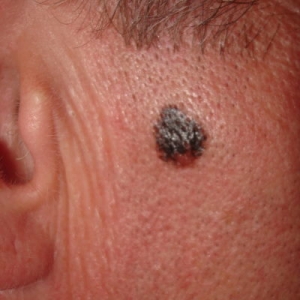Women 9x Better at Spotting Melanoma Than Men

Research from the AAD (American Academy of Dermatology) has highlighted a significant gender gap in spotting melanoma.
The study found that women in the US are nine times more likely to notice melanoma on another person’s skin compared to men.
This means that women could help identify worrying signs, enabling men to seek earlier treatment and potentially saving lives.
In the survey of married women,
- 45% said that they would be more likely to notice a suspicious blemish than their husband
- 35% had already noticed a suspicious spot on their husband’s skin before he did
- 67% of women said they check their skin for signs of skin cancer at least once a year
- 44% help their husband do the same
- 37% said their husband examines his own skin at least once a year
Early Detection Key To Skin Cancer Treatment
Science has established that the outcomes of skin cancer treatment are significantly better with early intervention. The implications of the study are that women can help:
- Don’t be afraid to say something if you think someone has a worrying blemish/spot/mole/lesion
- Get involved in encouraging your partner to self-check, or even better, do a full top to toe mole check for him
- Men over 50 are known to have an increased risk of developing melanoma
- Getting it checked early could save a life
Henry W. Lim, MD, FAAD, president of the AAD, said:
“Because men over 50 have an increased risk of melanoma, it’s important for them to conduct regular skin self-exams to detect the disease in its earliest stages, when it’s most treatable.
“Since it can be difficult to examine some parts of your body on your own, it’s best to ask a partner for help.”
Signs & Symptoms
The first sign of a melanoma is often a new mole or a change in an existing mole. Things to look for are well summarised by the ABCDE mole checking rules:
- Asymmetry – an odd or uneven shape
- Border – this may be unusually rough or jagged
- Colour – tends to be particularly dark or blotchy mix of colours
- Diameter – most melanomas are larger than 6mm (1/4 inch) in diameter
- Evolving – a mole that has changed in appearance or behaviour (e.g. started to itch or ooze)
Melanoma can appear anywhere on the face or body – even areas that have not been exposed to the sun, so check the soles of the feet, hair and everywhere else too.
Dr Ross Perry, a leading mole removal expert who is the Company’s founder and Medical Director, advises use of the ugly duckling rule – looking out for a mole/moles which are different and ‘odd’.
A hunch that it’s not right is best checked out by a GP or mole expert. Dr Ross Perry advises patients to seek medical attention as soon as possible to rule out skin cancer.
Skin Surgery Laser Clinics
Cosmedics’ Skin Surgery Laser Clinic offer private mole removal at a selection of clinics based in London and Bristol. Moles are removed using the latest surgical techniques including laser mole removal; with trained doctors and surgeons.
Our team of qualified and experienced doctors and surgeons also treat other skin blemishes, including sebaceous cysts, skin tags, warts and lipoma using freezing, laser or surgical techniques.
For ultimate peace of mind, Cosmedics Skin Surgery Laser Clinic offer a thorough top to toe mole check carried out by their trained and experienced doctors.
Cosmedics Skin Clinics was founded in 2003 by Dr Ross Perry, a qualified and experienced London GP who has an excellent reputation in skin treatments and has removed thousands of lesions/blemishes in his career.
For more information or to book a consultation, please complete the form on this web page or call 020 7386 0464.


